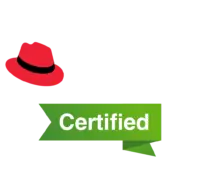
Overview
This course is designed for IT professionals aiming to enhance their skills in securing Linux systems deployed on physical hardware, virtual machines, and cloud platforms. Participants will learn to implement robust security measures, manage compliance, and mitigate risks using industry-standard tools and practices.

Objectives
By the end of this course, leaner will be able to:
- Define and implement strategies to manage security on Linux systems.
- Automate configuration and remediation using Ansible Playbooks.
- Encrypt data on storage devices and manage automatic decryption during system boot.
- Protect systems from unauthorized USB device access.
- Manage authentication, authorization, and session settings using Pluggable Authentication Modules (PAM).
- Record and inspect system events relevant to security using the Linux kernel’s Audit system.
- Detect and analyze changes to a server’s file systems using AIDE.
- Enhance security between processes using SELinux and advanced techniques.
- Evaluate and remediate a server’s compliance with security policies using OpenSCAP.
- Identify and correct common issues and vulnerabilities using Red Hat Insights.
- Automate and scale compliance checks using Red Hat Satellite.

Prerequisites
- Experience as a system administrator responsible for supporting physical and virtual infrastructure, systems, and servers.
- Familiarity with IT security practices and compliance requirements.
- Basic knowledge of automation tools and cloud infrastructure.

Course Outline
- Develop strategies to manage security on Linux systems.
- Use Ansible Playbooks to remediate configuration and security issues.
- Encrypt data on storage devices using LUKS.
- Manage automatic decryption during system boot with NBDE.
- Implement USBGuard to protect systems from unauthorized USB devices.
- Configure PAM to manage authentication and authorization settings.
- Utilize the Linux kernel’s Audit system to record and inspect security-relevant events.
- Deploy AIDE to detect and analyze changes in file systems.
- Apply SELinux policies to improve security and process confinement.
- Assess and remediate system compliance using OpenSCAP.
- Identify and address common security vulnerabilities using Red Hat Insights.
- Scale and automate compliance checks with Red Hat Satellite.
- Consolidate and review the skills and knowledge acquired throughout the course.


 Projects
Projects Assignments
Assignments






